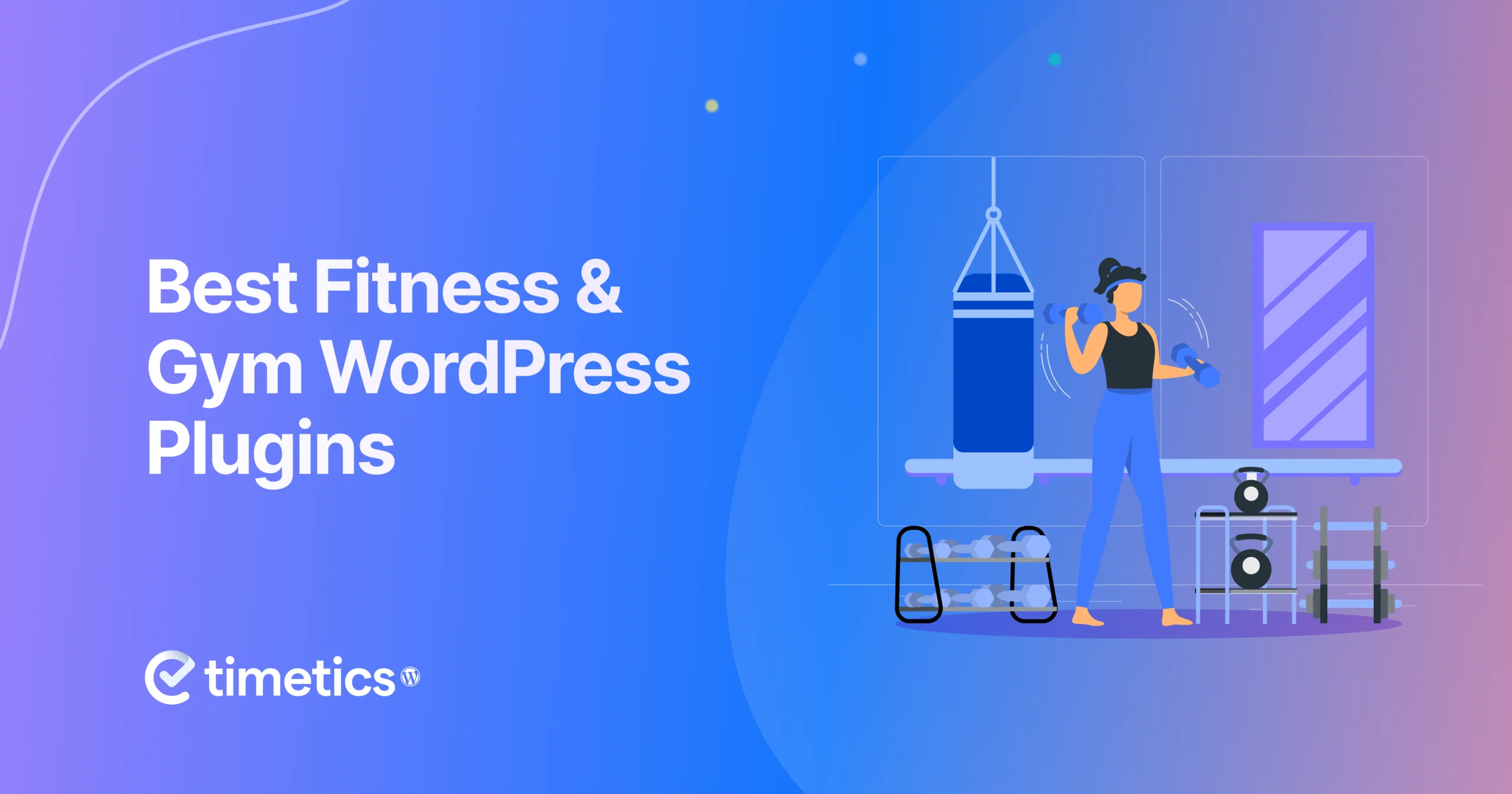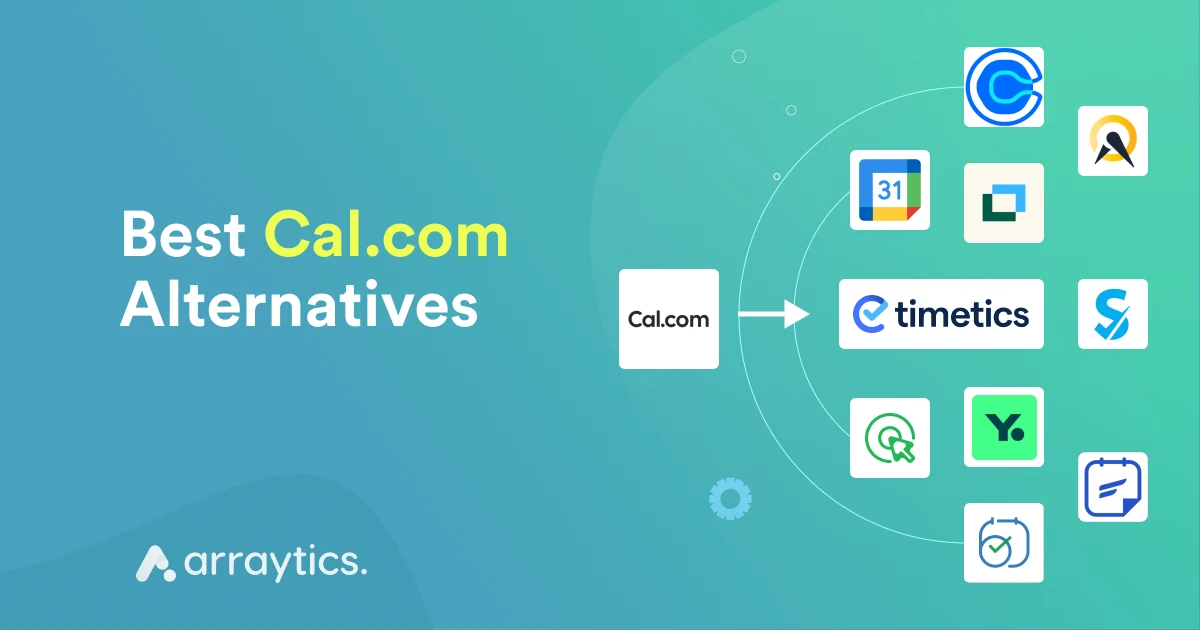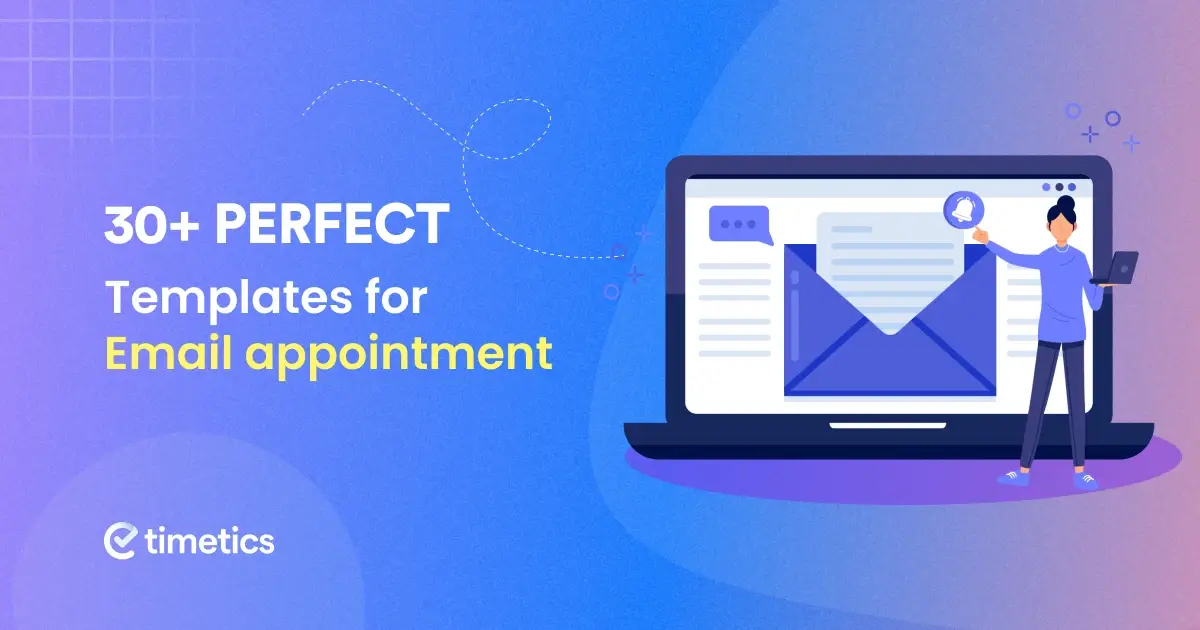How AI Search Is Killing Your Traffic(And How to Fight Back :10 practical strategies)
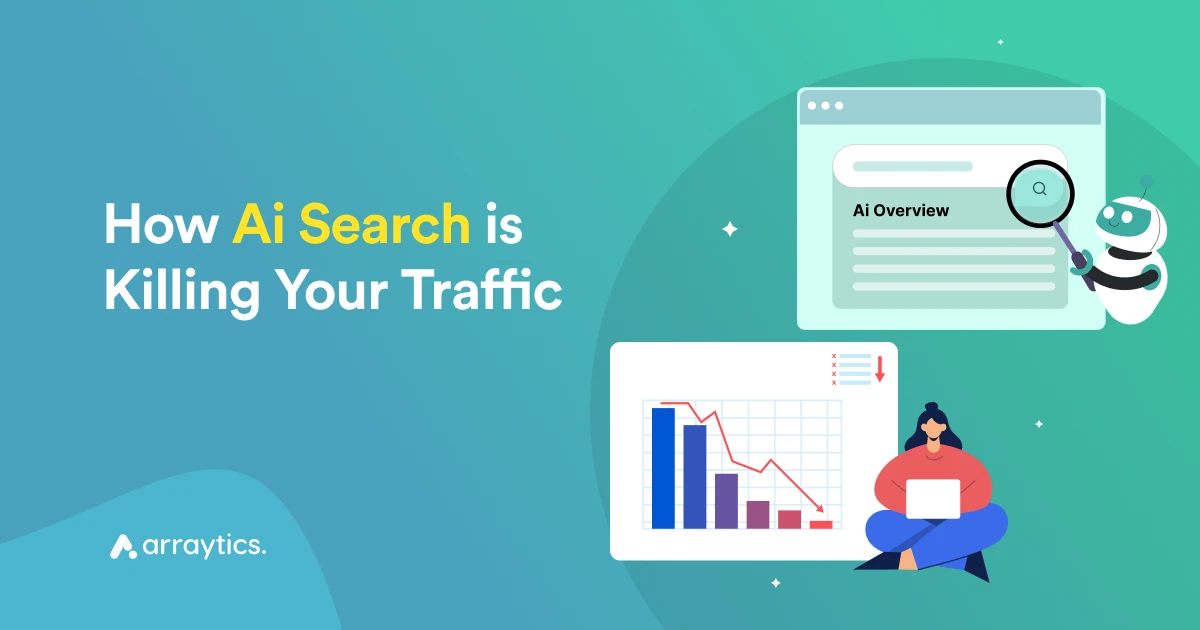
Have you noticed a sudden drop in your website traffic?
We all face this. AI-powered search features like Google’s AI Overview and Bing’s AI answers are changing how people search online. These tools give users direct answers on the search results page—and don’t give a single click to the source website.
While it’s helpful for searchers, but it’s bad for site owners. If users don’t need to visit your site to get answers, your traffic goes down.
In this blog, we’ll break down how AI search works, why it’s hurting your traffic, and what smart steps you can take to fight back and stay visible in search results.
- ➡️ AI search tools like Google’s AI Overview and Bing Chat show answers right on the search page — often without sending clicks to your site.
- ➡️ This creates zero-click searches, meaning users find what they need without even visiting your page.
- ➡️ You may still rank well, but get fewer visits — because AI-generated answers push your link down or give users what they need upfront.
- ➡️ If you’re seeing a drop in organic traffic but your rankings look stable, AI could be the reason.
- ➡️ Use tools like Google Search Console, GA4, and Microsoft Clarity to track signs like lower CTR, reduced sessions, and quick bounces.
- ➡️ Focus on the new SEO triad: AIO (AI Optimization), GEO (Generative Engine Optimization), and AEO (Answer Engine Optimization).
- ➡️ Start small — even adding schema, answering more questions, or updating your intro can help you stay visible in AI search results.
What is AI search? A simple explanation
AI search is a new way to deliver desired results as an answer by using artificial intelligence.
In Google’s case, the Search Generative Experience (SGE) creates an AI-generated snapshot at the top of your search results, summarizing key information from various sources.
For example, with Google’s Search Generative Experience (SGE), when you search for something, you see a quick answer at the top of the page.
AI makes this answer and includes the most important information from different sources. You don’t have to click on lots of links to find what you need—the AI gives you the main answer right away on the search page.
Why AI search hurts your traffic
AI-powered search tools like Google’s AI Overview now answer user questions directly on the search results page. This might seem helpful for users, but it can seriously hurt your site’s organic traffic. How? Let’s find out:
- Zero-click searches are rising: Many users now get their answers straight from the search page. They don’t need to click your link, even if you rank high. In fact, reports show a 35% drop in clicks for top-ranking pages since AI answers started rolling out.
- Your content gets used, but without clear credit: AI pulls data from websites — often including yours — but users rarely notice or click on the tiny citations. Your work helps power the answer, yet your traffic suffers.
- Your links are pushed down the page.: AI answer boxes, ads, and other rich features now appear above traditional search results. Even if you’re ranked #1, you might end up far below the fold — where fewer users scroll.
- Even when cited, users don’t click: If the AI summary satisfies their query, there’s no need to visit your full post. This cannibalization of clicks adds up. One study showed websites lost between 18% to 64% of their organic traffic after SGE rolled out.
AI search is shrinking the pie of clicks for website owners. Users are still searching, but they’re not visiting websites as often for answers to basic questions, definitions, how-tos, etc.
Now let’s see how you can tell if this is happening to you.
5 Real signs you’re losing your website traffic
How do you know if AI search (like Google’s SGE or Bing’s AI answers) is the culprit behind your traffic drop?
Here are some proven signs, along with how to confirm them:
1. Lower clicks in Google Search Console
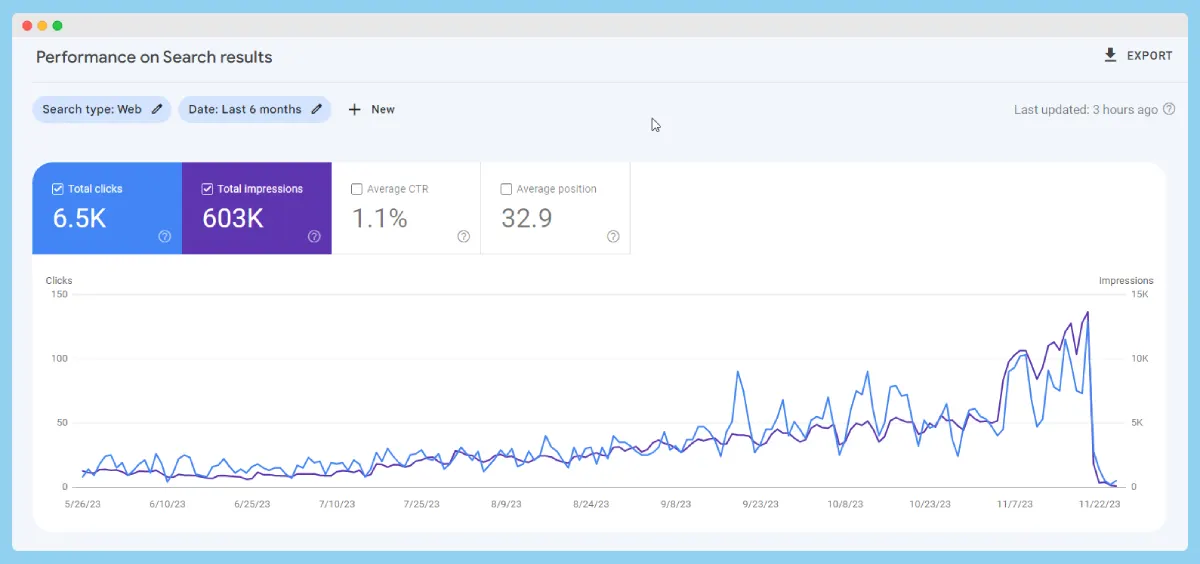
Google Search Console is one of the first places you’ll see the impact. Check your Performance report for clicks over time. If you notice that clicks have decreased even while your total impressions remain steady (or even increased), that’s a red flag.
In Search Console, look at the CTR (click-through rate) column for your top queries – a sudden drop in CTR on informative queries (without a ranking drop) can indicate that users got their answer from the SERP itself.
How to check:
- Go to Search Console > Performance > Search Results
- Compare clicks and impressions over 3–6 months
- Focus on CTR (click-through rate): if impressions stay high but CTR drops, AI may be giving the answer on the SERP
2. Drop in organic sessions in analytics
In Google Analytics (GA), especially GA4, monitor your organic search traffic trend. If you see a noticeable decline in organic sessions starting around mid-2023 or later (when AI search features rolled out), it could be related.
To be sure, correlate the timing with any announcements (for instance, Google expanding SGE access) and see if the drop is mostly for informational pages. A broad decline in pageviews or sessions from Google, without other obvious causes (like a Google core update or site issue), might be attributed to increased zero-click behavior.
How to check:
- Open Google Analytics 4 (GA4)
- Go to Reports > Acquisition > Traffic acquisition
- Filter by Default Channel Group = Organic Search
- Look for sudden dips starting mid-2023 or after major AI updates
3. Keywords still rank, but with less traffic
If you have pages that are still ranking on page 1 but their traffic has halved, an AI answer or featured snippet might be siphoning off visitors.
For instance, say your article “How to create wordpress blog” used to get 8,100 visits/month from Google, and you still rank #2 for “Google AI Overview impact” – but now you only get 5,400. It could be that Google’s AI overview is listing the top cameras right on the SERP, reducing the need to click your list.
4. Underperforming “Question” posts
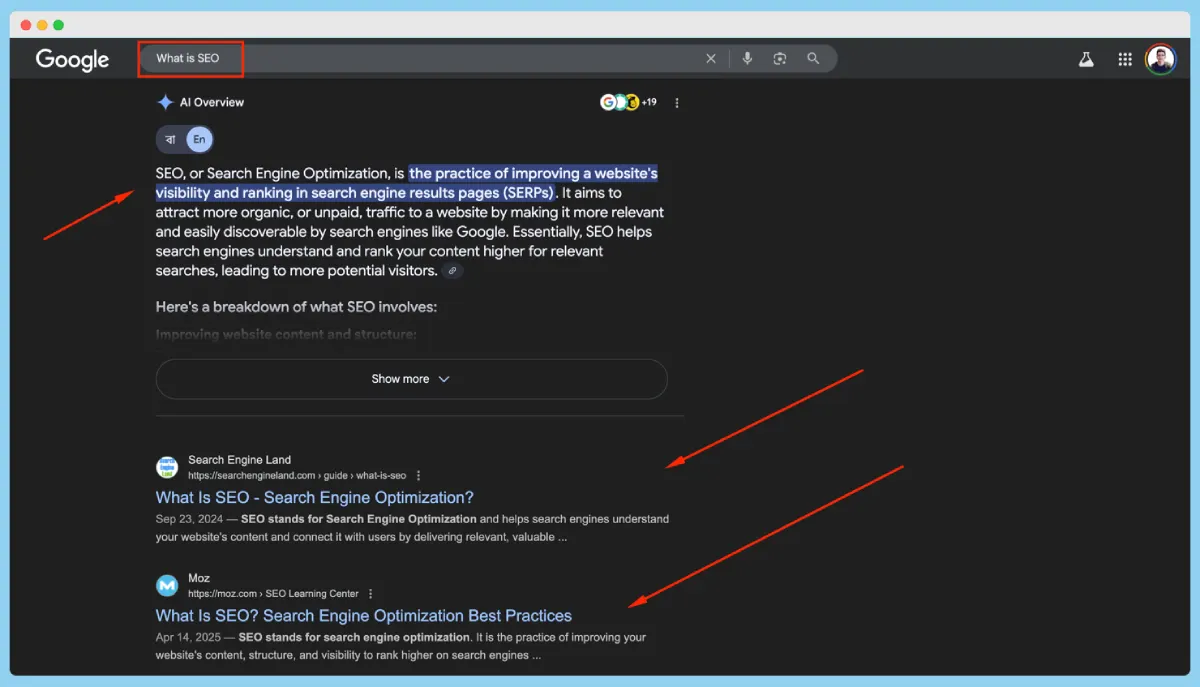
Look at posts that directly answer questions or define terms – content that is ripe for AI summarization. If you had an FAQ-style blog post or a “what is SEO” article that suddenly lost traffic, it might be because the AI now provides that answer.
Compare the performance of such posts before and after AI search rollouts. Also, check if those pages are still getting impressions in Search Console. If impressions remain high but clicks dropped, it again suggests users see your information (via AI or snippets) but don’t visit the page.
5. User engagement changes
Suppose AI search is taking your informational traffic. In that case, you might notice changes like a higher bounce rate or lower scroll depth on those pages – because the few visitors who do click are maybe less intent on reading (some might just skim since they already saw a summary).
Or you might notice shorter session durations. While these are indirect, combined with the above signs they build a case that AI answers are affecting your audience’s behavior.
How to check:
- In GA4, go to Engagement > Pages and screens
- Look for higher bounce rates, shorter average engagement time, or lower scroll depth
- Or use Microsoft Clarity to watch session replays and spot quick bounces or skips
Now you understand how much AI-powered search is affecting your traffic. Next, we’ll shift from the problem to the solution — how to adapt and still attract traffic in the age of AI search.
How to rank in AI search results: 10 practical strategies
If AI search is here to stay, how do you make sure your site isn’t left behind?
The answer is to optimize not just for traditional search rankings, but also for how AI systems read and present information.
Below are 10 strategies to help your content get noticed (and clicked) in an AI-dominated search results page. In each strategy, content is structured for AI consumption based on AEO, GEO, and AIO.
Let’s break them down:
1. Answer before you explain
When someone lands on your page – or when an AI scans it – you want to deliver the answer quickly. Don’t skip over the content. Answer the question in the first sentence or two, then elaborate with details. This approach, sometimes called “answer-first content,” aligns with Answer Engine Optimization because it increases the chance your concise answer gets picked up for a snippet or AI summary.
For example: if your article is titled “What is WordPress?”, start with a direct definition like: “WordPress is a popular open-source content management system for building websites.”
This one-sentence answer could be what an AI overview grabs.
After that, you can go into the history of WordPress, features, etc. By putting the quick answer up front, you satisfy both impatient human readers and AI algorithms looking for a straightforward answer.
In fact, content that delivers a clear, direct answer right away is more likely to be featured in Google’s snippets and voice results . Think of each heading in your content as a question that you immediately answer in the first line or two under that heading.
2. Use FAQ blocks with schema
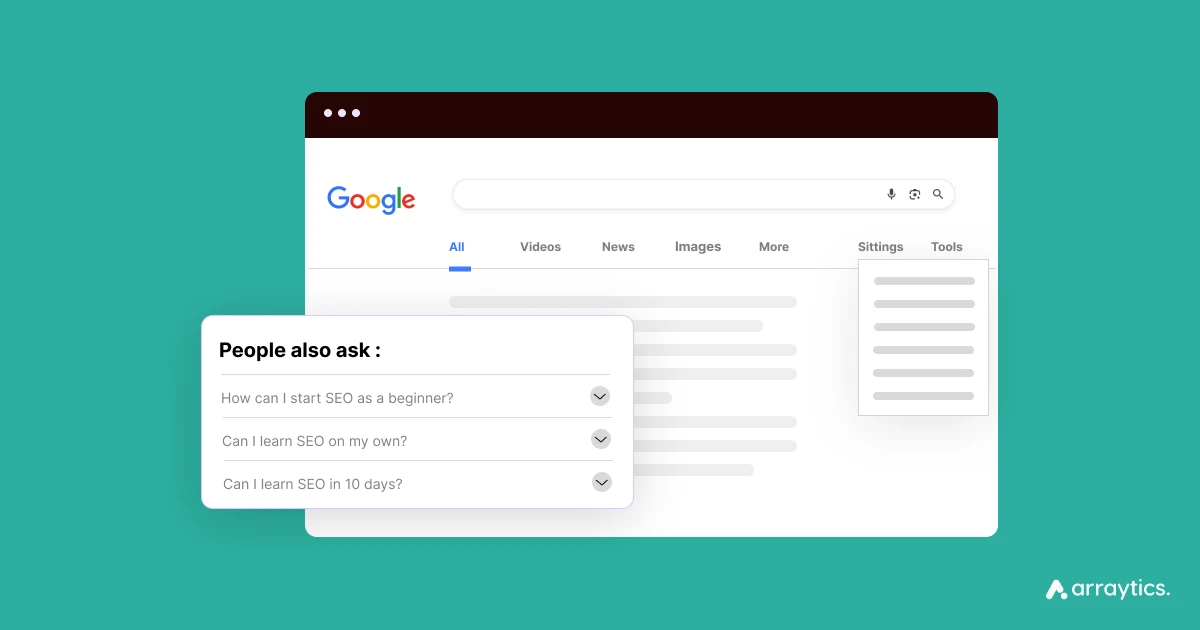
Google loves to show FAQ rich results (those expandable Q&A boxes on the SERP), and importantly, AI systems use structured Q&A to understand content better .
Adding FAQ schema helps search engines understand your content as a question and answer. This is useful for both regular SEO and AI-powered search (GEO), because it gives clear, bite-sized info that AI can easily pick up.
By including an FAQ block , you achieve two things:
(a) You increase the chances of capturing a featured snippet or a spot in the “People Also Ask” box for those questions, and
(b) You feed the AI clear question-answer pairs that it might directly cite or use.
For instance, if you have a travel blog post about visiting Paris, you might add an FAQ:
“Q: What is the best time to visit Paris?
A: The best time to visit Paris is in spring (April-June) or fall (September-October) when the weather is mild and crowds are thinner.”
Many SEO experts are recommending schema usage more than ever – FAQ, HowTo, Article, Product schema and more – to make your content machine-friendly .
It’s a small technical step that can boost your visibility in both Google and AI-driven results.
3. Add TL;DR summaries at the top
Today’s readers (and algorithms) appreciate short, snappy writing. Consider adding a TL;DR summary at the very top of your long articles. This could be a short bulleted list or a few sentences summarizing the key points or answers.
For example, start a how-to guide with a “In a hurry? Here’s the quick summary of steps:” followed by the bullet points. This helps human readers who want the gist, but it’s also excellent for AI optimization.
We could call this “AI-Optimized Introduction.” It’s similar to writing an abstract for a research paper – highlight the main answers or conclusions right away. Not only does this cater to generative AI, but it also aligns with Google’s traditional snippet preferences (Google often grabs content from the top of the page for featured snippets).
Make sure your TL;DR is rich in keywords and straight to the point, but still human-readable. This strategy blends AIO (formatting content for AI) and GEO (speaking in a way generative models prefer).
4. Use semantically related subtopics
Cover your topic comprehensively by including semantically related subtopics and entities throughout the post. Generative AI models, like the ones powering SGE(Search Generative Experience), don’t just look for exact keywords – they understand topics more broadly.
For example, if your article is about “how ai search kill traffic,” a human writer might just focus on pros and cons. But an AI-savvy approach would also naturally mention related concepts like AI search killing traffic, AI search WordPress SEO, Google AI Overview traffic drop, Zero-click searches SGE, etc. By touching these subtopics, you signal to the AI that your content has depth and breadth on the subject.
SEO strategists call this building “topic authority” or covering the entity and its related aspects thoroughly . Practically, you can do this by brainstorming what sub-questions a reader might have, or what terms are closely associated with your main keyword.
There are also tools and techniques (like using Google’s NLP API or simply checking the “related searches” at the bottom of Google results) to find related terms. Incorporate these naturally as subheadings or paragraphs. Not only does this help you rank for long-tail queries, but it strengthens your chance of being the source an AI overview trusts.
5. Write for humans, format for machines
As you hear all this talk of AI, never forget the human reader – but do present your content in a structured way that machines love. This means keeping your writing natural and engaging, while using clear formatting and structure.
Use descriptive headings (include the question or keyword in them when relevant), short paragraphs, bullet points, and tables where appropriate.
SEO experts say: Don’t just focus on keywords — think about the full topic and related ideas (called entities and context).
From an AI optimization perspective, this “scannability” is important. Google’s algorithms (and the AI summarizer) can quickly understand your content hierarchy.
In summary, write in a friendly, clear tone, but organize it in a semantic HTML structure (H1, H2, lists, etc.) that’s easy for a bot to digest. An added bonus: a well-formatted article is more likely to get featured in snippets and voice search because it can be broken down logically.
6. Optimize for “People Also Ask” questions
The “People Also Ask” (PAA) box on Google has become a prominent part of search results, and it often contains related questions to the user’s query. These are golden opportunities. Each PAA is essentially Google highlighting a frequently asked question. By optimizing your content to answer those questions explicitly, you can capture that traffic and provide content that AI can use for follow-up questions.
For example, if you search “What is Google AI Overview” you might see questions like “Is Google AI overview trustworthy?” or “What is Google’s AI system?”
Take several relevant PAA questions and incorporate them as subheadings in your article (or include them in your FAQ section as mentioned before). Then answer them clearly right under each heading. When you do this, you not only increase the odds of getting featured in those PAA boxes , but you’re also aligning with Answer Engine Optimization – directly answering popular questions.
Google’s AI Overview and other search engines often pull from common Q&A (question-and-answer) pairs to create their results.
That’s why being answer-ready is no longer optional. To stay visible, your content should aim to answer as many relevant questions in your niche as possible — and become the trusted source.
7. Embed visuals and videos
AI can summarize text, but it struggles with visual and interactive content. You can use that to your advantage by embedding original images, infographics, and videos in your content. Not only do visuals make your content more engaging for readers, but they also provide something that the AI snippet cannot fully replicate.
For example, suppose you have a detailed diagram or a custom infographic explaining a process. In that case, an AI overview might reference that such an image exists (“see image above”) but the user would still need to click your site to actually view it.
Videos are even better – Google’s AI might summarize a bit of what’s in a video, but it can’t replace the video experience.
Google’s SGE has been seen citing or linking to videos for certain queries (like “how to create an event” might show a YouTube clip along with text) . If your video is optimized (proper title, description, maybe transcript), it could be the one featured.
So, think beyond just words: add charts, screenshots, photos, or even interactive tools that add value. Plus, visuals break up text and improve human readability – which indirectly helps SEO and shareability.
8. Build internal topic clusters with anchor text
Show search engines that you’re an authority by internally linking your content into clusters. A topic cluster means you have one broad pillar page and multiple related sub-pages, all interlinked.
For instance, if you run a wordpress blog, you might have a pillar page on “How AI Search Is Killing Your Traffic in WordPress” and cluster pages on “AI optimization techniques,” “organic CTR drop AI overview,” “Google AI Overview impact on traffic,” etc., each linking to each other with relevant anchor text (like the “AI optimization techniques” linking back to the pillar with text “ai optimization guide” or similar).
When generative AI searches for information, it often prefers these types of websites that offer complete coverage on a topic.
Make sure your anchor text is descriptive and relevant (avoid generic “click here” links). For GEO (Generative Engine Optimization), think of it as creating a web of knowledge on your site: if the AI finds one page useful, it might crawl the linked pages and see you have the whole network of info covered.
Plus, from a traditional SEO standpoint, internal linking distributes PageRank and can improve rankings too.
9. Show first-hand experience (E-E-A-T)
Google’s quality guidelines now emphasize E-E-A-T: Experience, Expertise, Authoritativeness, Trustworthiness.
To optimize content for this, do things like: add an author bio with qualifications, mention your years of experience, link to any credentials or social proof, and include unique insights.
Search engines are trying to ensure the answers they give are trustworthy; by showcasing experience, you align with that goal. As an added bonus, authentic content is more likely to engage readers and earn backlinks, which helps both SEO and overall credibility.
For example, if you’re writing a product review, mention how you tested the product, include your own photos of it, and describe specific things only a user would know. If you’re giving travel advice, share personal anecdotes or data from your own trip.
Why does this matter for AI search?
Because the AI models often look for signals of credibility when deciding whom to cite or which answer to trust . Also, Google’s SGE tends to show the author name and even brief source info for some answers, so having a strong author bio (with credentials) and site authority can influence whether you get picked as a source.
Tip: Be the expert and don’t be afraid to show it – AI will likely prefer citing an expert source over a thin content farm.
10. Use product & how to schema markup
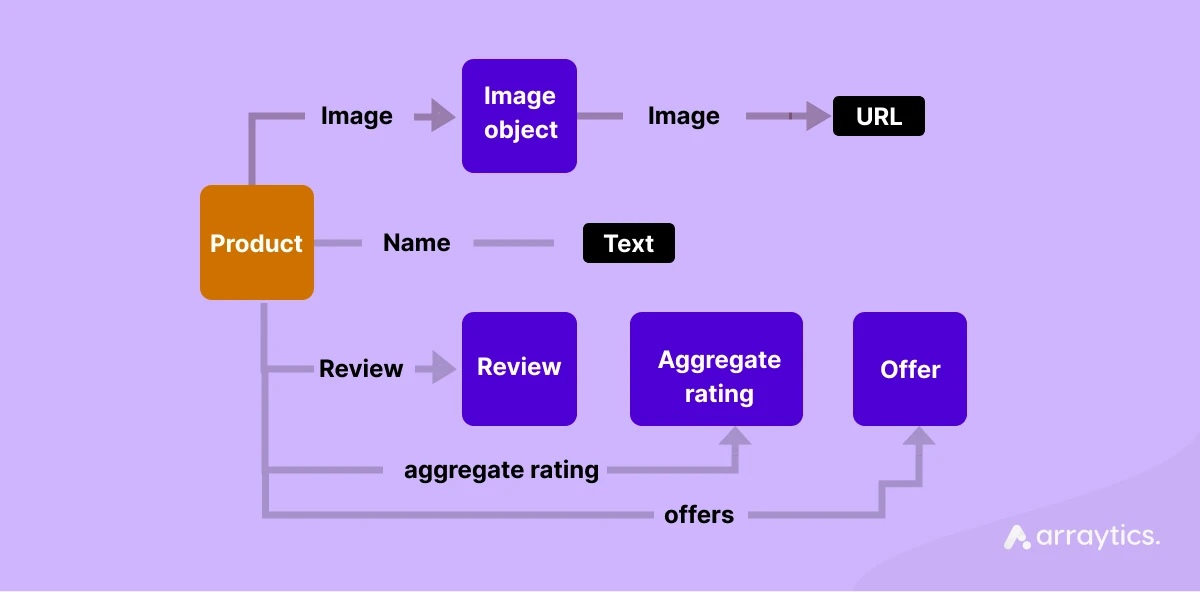
Structured data isn’t just for FAQ pages. If your site offers recipes, how-tos, products, reviews, etc., make liberal use of relevant schema markup.
Product schema can feed details like price, availability, ratings to Google – and some of these might surface in AI answers for shopping-related queries. Google’s AI snapshot for shopping queries is built on its Shopping Graph, which heavily uses schema data like Product markup .
Similarly, HowTo schema can explicitly outline step-by-step instructions. We’ve seen cases where Google’s AI will present steps for a how-to directly in the answer. If your how-to content is marked up properly, the AI might take your structured steps (with attribution).
For example, a query “how to change a tire” might trigger an AI answer listing the steps. If your site has those steps marked in schema, Google might pull from you (or at least rank you well).
The same logic applies to Review schema; for example, if someone asks “Is the XYZ product good?”, an AI might say “It has an average rating of 4.5 stars based on 200 reviews,” which comes from schema data.
Also consider Local Business schema for local queries, Recipe schema if relevant, etc. The more you speak in the language of structured data, the more machine-readable your content becomes (that’s AIO as well).
It’s worth noting that in one analysis, over 60% of links used in AI overviews came from sources outside the top 10 organic results – which means the AI is often pulling from all over, looking for the content that best fits. Schema can be one way to stand out with exactly the info needed.
💡 Pro Tip – Build Topical Authority
To get the most out of your SEO efforts, cover all key areas of your niche.
Avoid random one-off posts . Instead, build a full content library around your topic and connect the posts with internal links (like in Strategy 8).
Final thoughts
The rise of AI-driven search is a double-edged sword. On one side, it provides users with faster, richer answers. On the other, it’s stealing clicks from websites by keeping users on Google or Bing. If you’ve noticed your traffic dropping despite maintaining rankings, you’re not alone – this is a reality many site owners are coming to grips with.
As you finish reading this, consider taking action: check your analytics and Search Console now. Identify those pages and queries that are suffering and apply a couple of the strategies from this guide. Even small tweaks like adding an FAQ section or a short summary can make a difference. The sooner you start optimizing for AIO, GEO, and AEO, the sooner you’ll stop the bleeding of traffic and perhaps even start growing again in this new paradigm.
Frequently asked questions (FAQs)
1. What is zero-click search?
A zero-click search happens when users get the answer they need directly on the search results page—without clicking any website link.
2 . How do I optimize my blog for AI search?
Use answer-first writing, FAQ blocks with schema, clear structure, and show real experience. Also, cover related subtopics and add visuals or videos.
3. Can I stop Google from using my content in AI answers?
Not fully. You can try blocking AI bots with a robots.txt rule, but this may also stop your site from ranking well in Google.
4. What is AEO in SEO?
AEO stands for Answer Engine Optimization. It means structuring your content to give quick, clear answers that AI and search engines can easily use.
5. What’s the difference between AEO and GEO?
AEO focuses on answering questions clearly. GEO (Generative Engine Optimization) helps your content get cited or summarized by AI tools like ChatGPT or Google SGE.
6. How does Google AI Overview affect website traffic?
It shows AI-generated answers at the top of search results, reducing clicks to actual websites—even when those sites are the source.
7. Is AI search good or bad for SEO?
It depends. AI search improves user experience but can reduce organic clicks. To stay visible, you need to optimize your content for AI.
8. How to recover traffic lost due to AI search?
Update your content with answer-first sections, structured data, visuals, and topical coverage. Track performance in GA4 and Search Console.
9. What are the best WordPress SEO strategies for AI search?
Use SEO plugins for schema, build internal links, add FAQ sections, and write for both users and AI using AIO, GEO, and AEO methods.
10. How to optimize content for AI-powered search engines?
Keep it clear, structured, and helpful. Use headers, schema, bullet points, and answer questions early. AI favors well-organized, trustworthy content.

